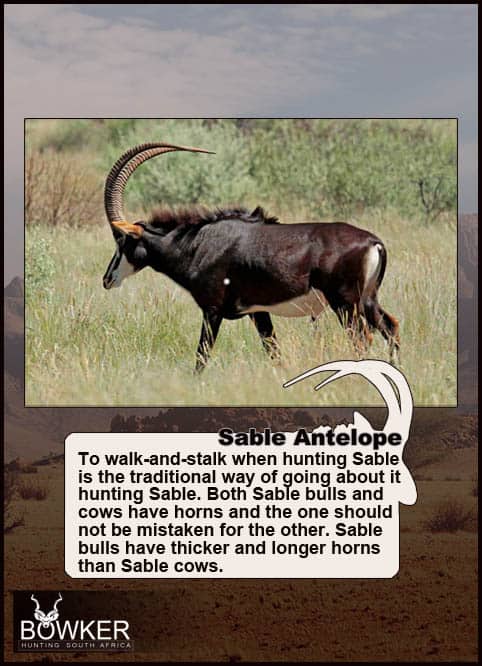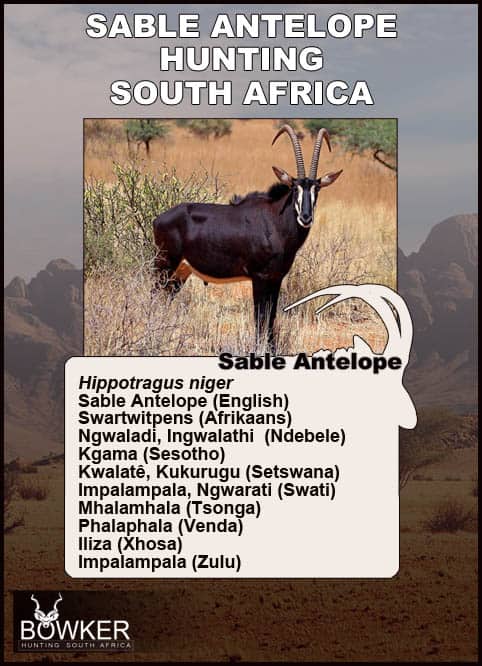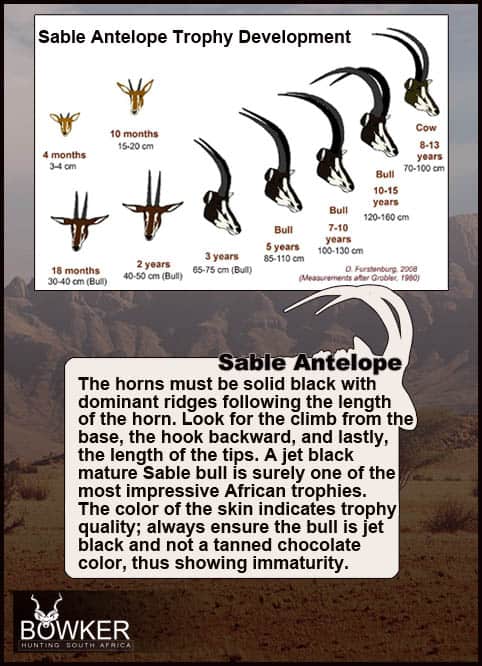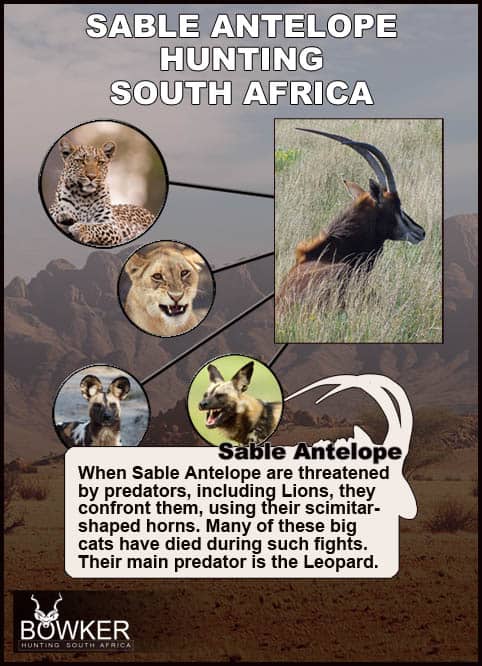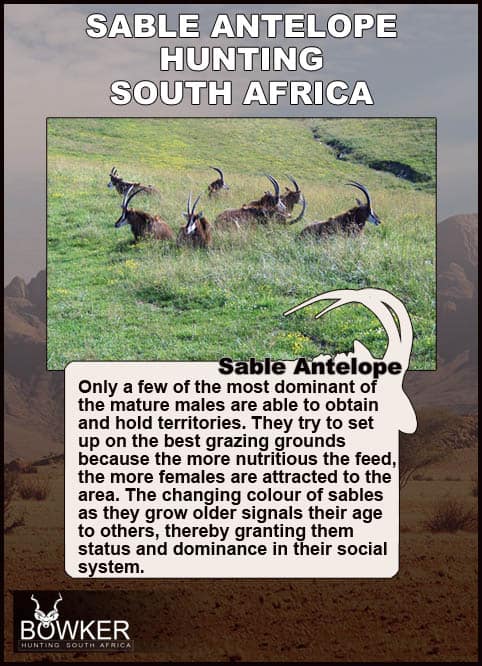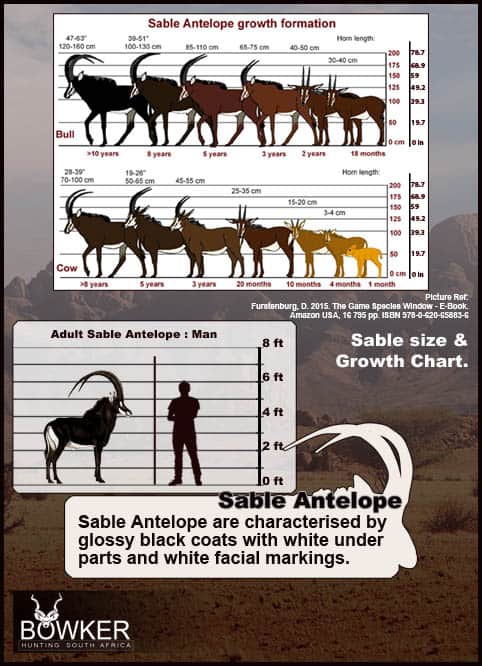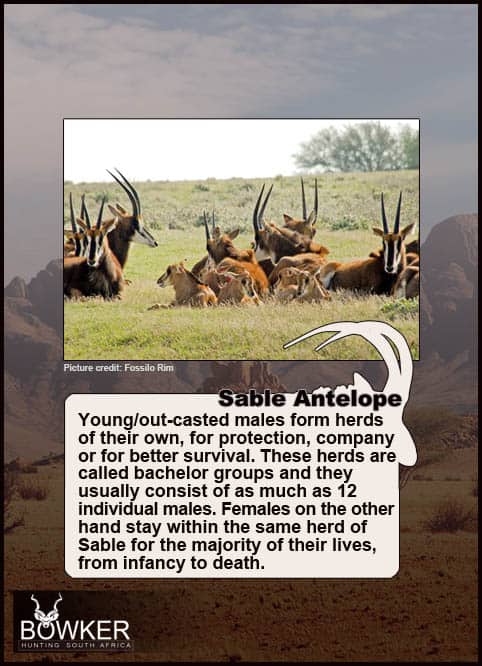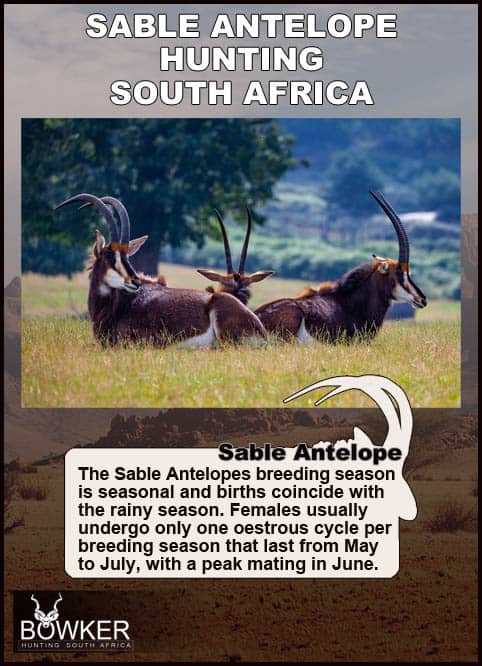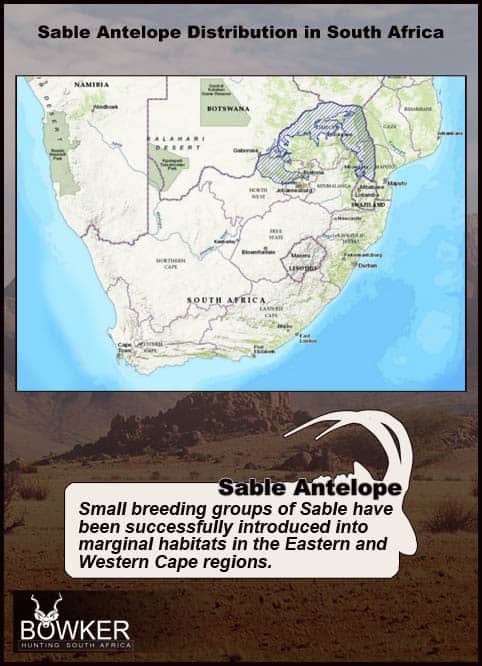Summary
Sable Antelope hunting is readily available in South Africa, with both sexes having long, sweeping, scimitar-like horns.
A large game antelope with mature males, predominantly black, with a white underside.
There are no seasonal restrictions on a hunting Sable trophy in the Eastern Cape.
Nick Bowker Hunting conducts safaris from Hopewell Lodge year-round.
Except for the kudu, the horns are exceptional and the longest of any antelope in Africa.
A pitch-black mature male is one of the finest trophies.
All safari travelers should have a majestic Sable bull in their trophy room.
The hunter visiting Nick Bowker Hunt Lodge will have no problems finding a trophy sable.
African hunting trips are relatively inexpensive compared to the USA.

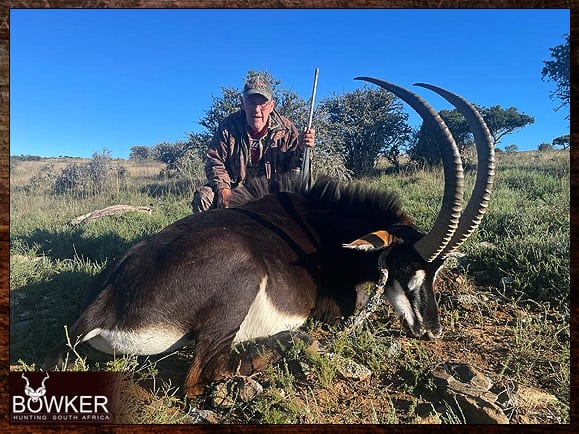
Table of Contents
Sable Trophy Fees in South Africa
The average price of a Sable Antelope is $5000. Hunting packages often include a Sable.
Our Sables trophy fee in 2025 is $5000
All-inclusive $8500 sable hunting package for seven trophies and eight hunting days. (Inclusive of your Sable Trophy Fee)
- Sable
- Nyala
- Impala
- Springbok
- Blesbok
- Warthog
- Red Hartebeest
The sable package includes a licensed hunting guide, a hunting license, and all permits.
Join us at our hunt lodge in the Eastern Cape area to hunt sable. The Bedford area offers some of Africa’s finest antelope hunting areas.
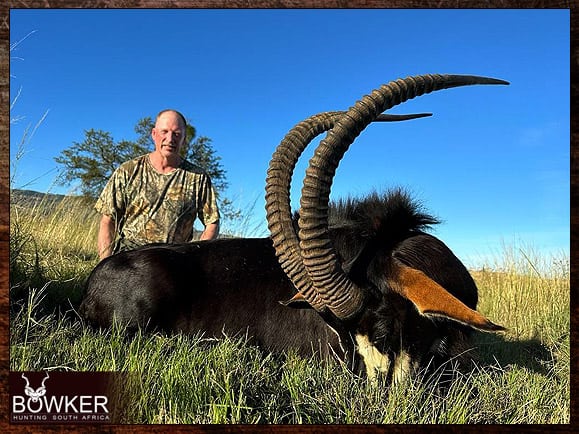
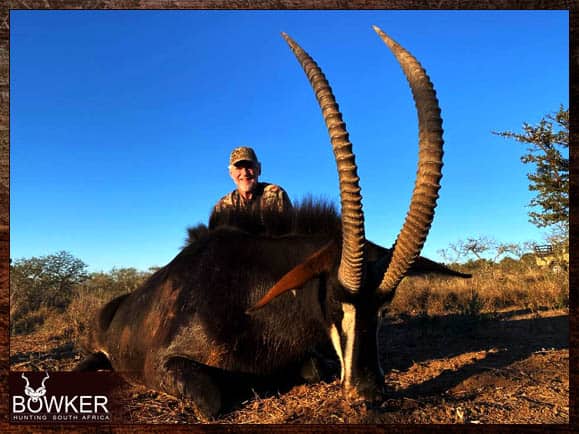
Sable Antelope Hunting in South Africa and Shot Placement

Shot placement must be in the bottom third of the animal, directly above the front shoulder, where the front leg joins the body. This will pierce a heart or lung. Avoid head and neck shots, which are high-risk while hunting.
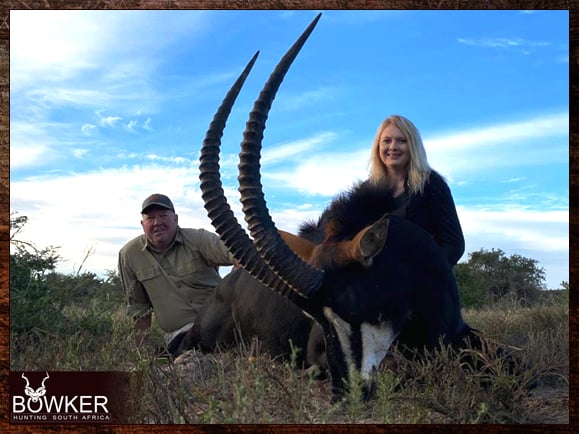
Your Africa sable antelope should have an average shoulder height of around 50 inches, weigh about 550 pounds, and have a Horn Length of approximately 38- 42 inches.
The Safari Club International minimum score for a sable antelope is 96. This is measured by adding the length of each horn as well as the circumference of the bases.
Nick Bowker has a sable herd. They are not indigenous to the Eastern Cape but have been introduced for hunting.
Now widely spread across the Eastern Cape, and hunting prices are much more reasonable.
Hunting sable should be on every hunter’s wish list.
A sizeable magnificent antelope trophy with shoulders higher than hindquarters.
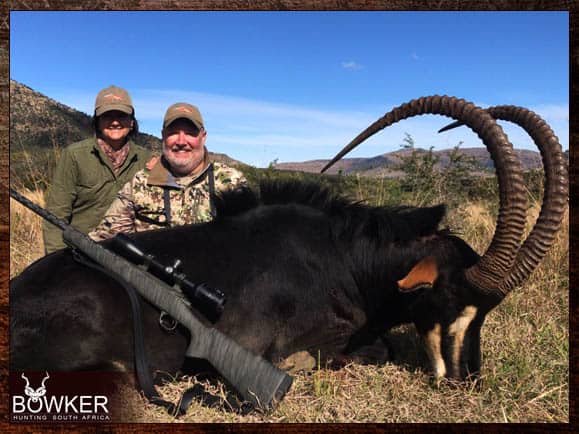
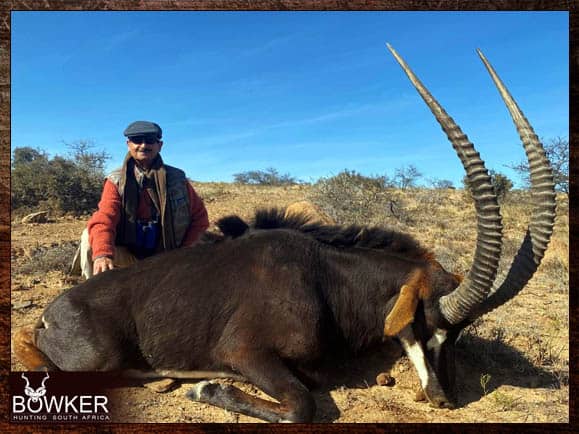
Facial markings and underparts are white, with both sexes having long sweeping scimitar-like horns.
Except for the kudu, the horns are exceptional, and the longest antelope on the continent.
This species depends on water and prefers open and sparse woodland areas near grasslands with some cover.
Sable, like roan, can be territorial, and the herd male will engage the challenger in a ferocious battle, often to the death.
It would be best if you were always mindful when hunting. He can be aggressive when wounded or cornered and will not hesitate to charge.
When trophy hunting sable, look for the male somewhere on the sideline and not amongst the cows.
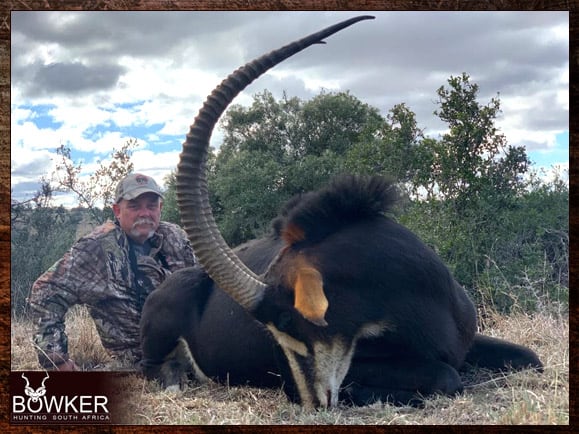
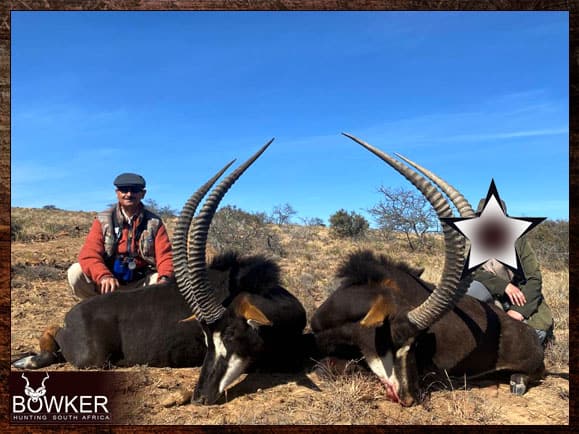
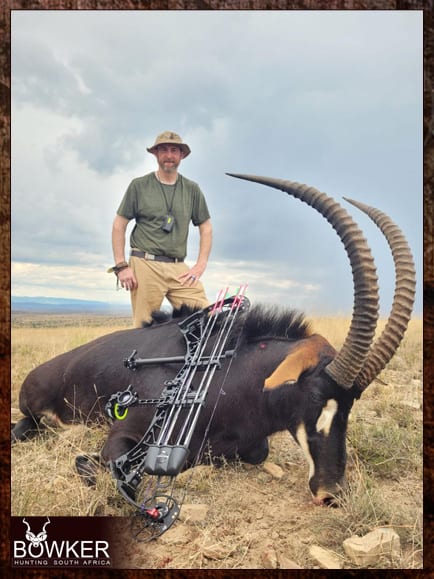
Trophy Judgement and Rifle Caliber for Hunting Sable
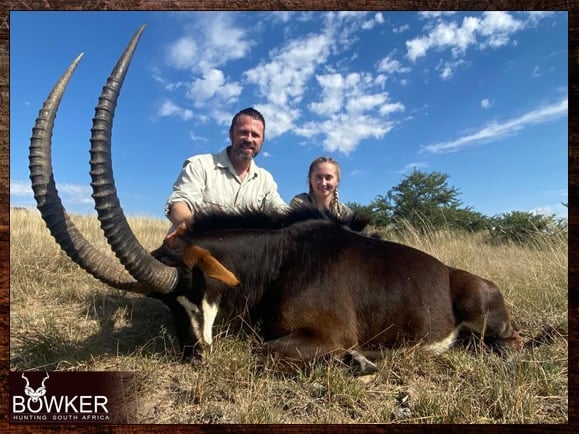
The side-on presentation calls for the high heart/lung entry point straight up the foreleg, about one-third into the body.
We recommend the 300 magnums as a caliber for sable hunts.
For those who wish to avoid going through the red tape of bringing a gun, Nick Bowker has 300 Winchester Magnums fitted with suppressors for hunting.
The rifles are mounted with high-end Swarovski optics. We have hand-loaded Hornady ELD-X 200-grain ammunition.
The guns, including ammunition, are free of charge as part of all hunting packages.

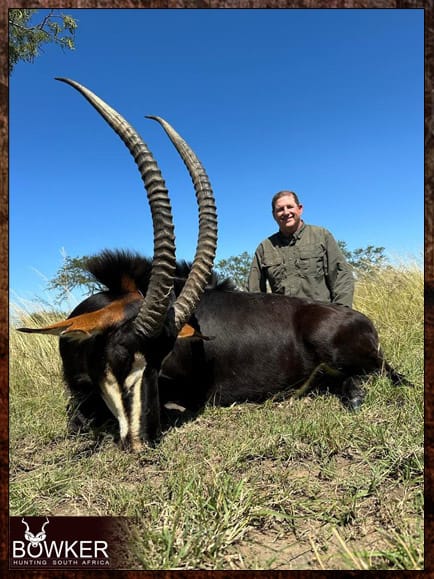
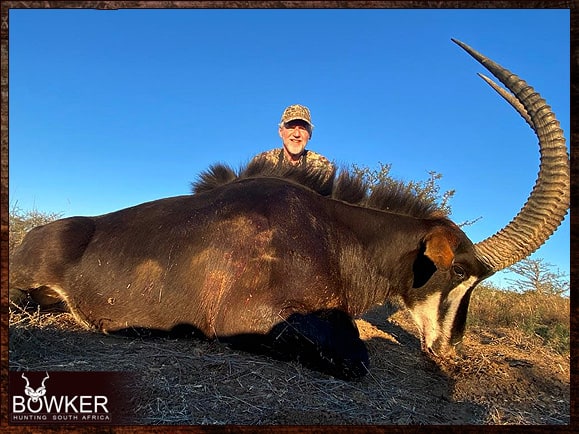
The most dominant male will be the first to join a new group of females when the position is open.
When judging a bull when hunting, look at the bases for size and a thick neck. The horns should have a whitish tinge around two-thirds of the way up.
If a predator threatens, they will confront it using their scimitar-shaped horns. Many of these big cats, for example, lions, have died while hunting this animal.
Hunts will be conducted by spot and stalk and can be successful most of the day. Hunting the sable should be on every hunter’s bucket list. This is an iconic African game animal.
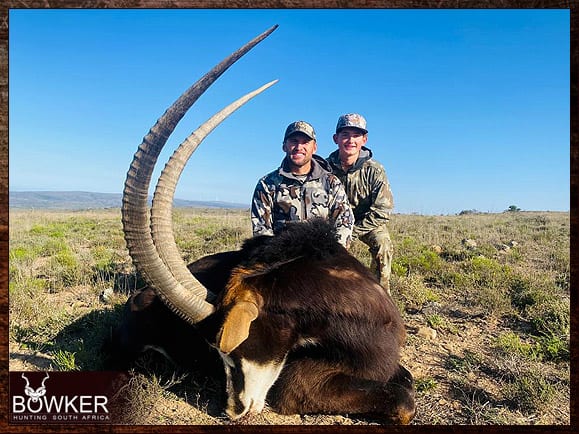
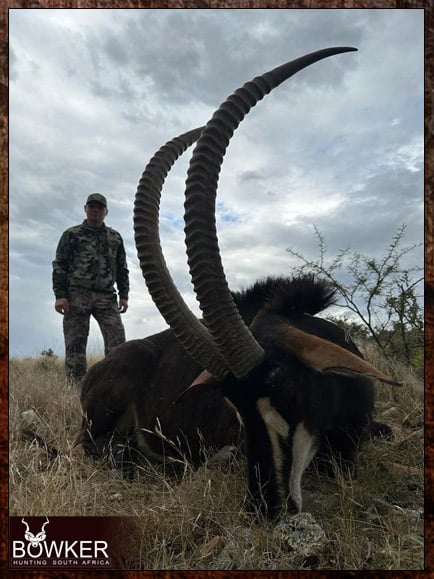
The Difference Between a Male and Female for Sable Hunting
A male sable is jet black with a white underbelly, and the female is dark brown. The local Dutch dialect name can be translated as “the black antelope with white underpants.” Males have longer and heavier horns.
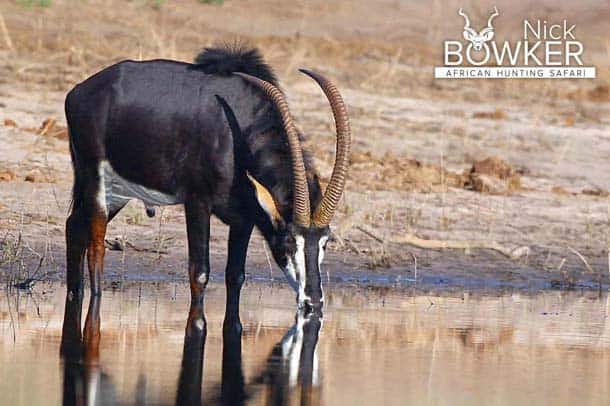
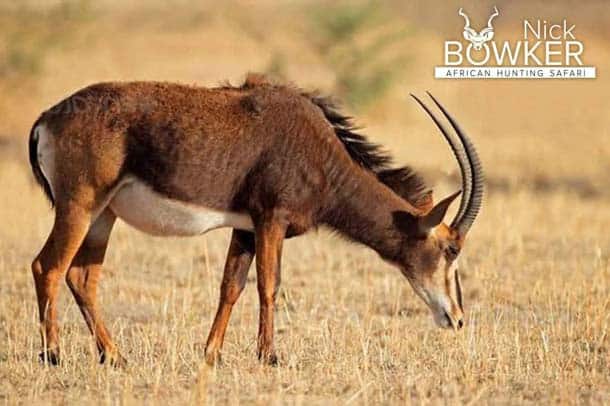
Interesting facts for Hunts
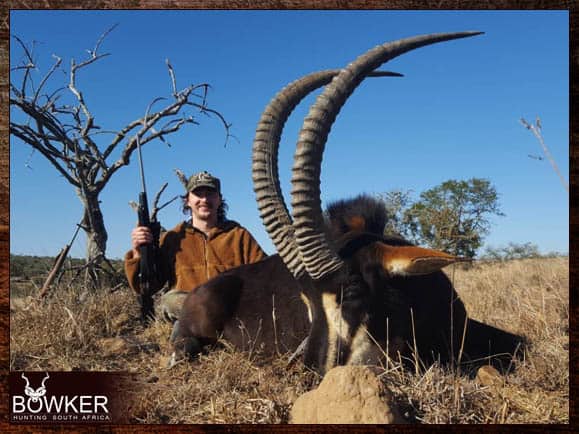
- They congregate in herds of 15 to 20 individuals with a matriarchal social structure.
- The group will have a dominant female who will be the leader.
- The herd has only one bull and jealously guards his harem against intruders. The juvenile bulls are exiled from the herd at about three years old.
- All the female calves remain. When the herd gets too large, it divides into smaller groups of cows and young.
- These groups will form new herds and again with only one adult male.
- The young males, separated from the herd, form bachelor groups.
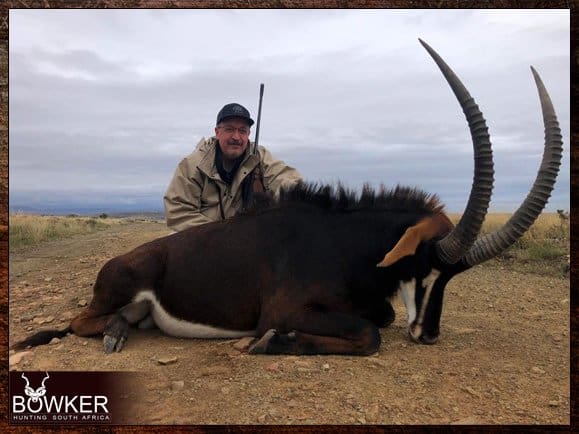
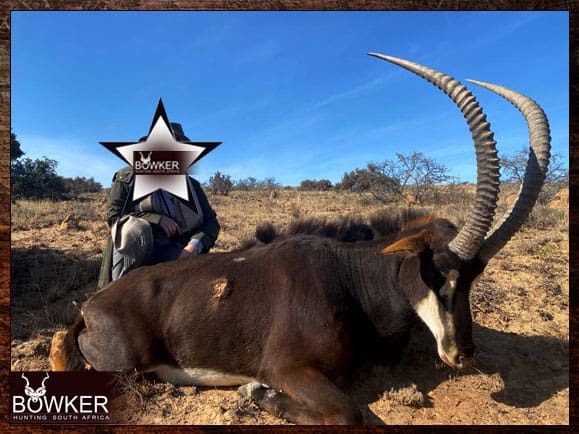
- The most dominant bachelor will be the first to join a new group of females when the position is open.
- They are very aggressive and territorial and can fight to the death. A recent clash at Hopewell in 2023 resulted in the death of a bull.
- If threatened by a predator, including lions, they will confront it using their scimitar-shaped horns. Many of these big cats, for example, lions, have died while trying to hunt these antelope.
- In Ernest Hemingway’s book, The Green Hills of Africa, he describes the habits of sables he used to hunt.
- This hunt should be on every hunter’s bucket list, like gemsbok and wildebeest, a unique, beautiful African plains animal.

About the Sable Antelope in Africa for Hunting
Description for the hunter
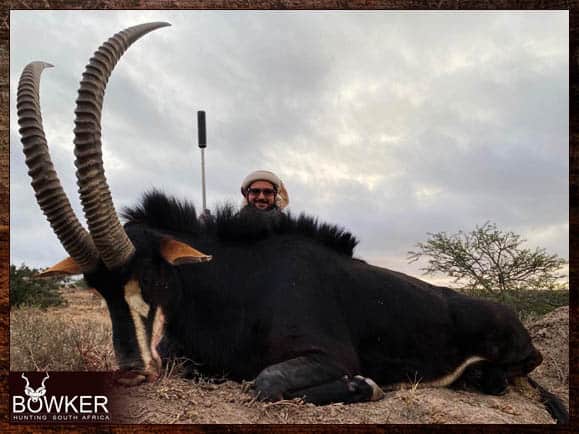
The sable is sexually dimorphic, with the male heavier and about one-fifth taller than the female.
The length of the sable is typically between 75 and 100 inches.
Males reach about 46 – 55 inches at the shoulder, while females are slightly shorter. Males will weigh around 550 pounds and females approximately 490 pounds.
A thick neck and tough skin, and a compact and robust build characterize the sable,
It has an upright mane on its neck and a short “beard” on the throat. The coloration is rich chestnut to black.
Females and young are chestnut to dark brown, while males begin darkening and turn black after three years.
However, in southern populations, Eastern Cape females have brown to black coats.
This results from the vegetation they eat, which causes skin pigmentation to be much darker.
The common sable species should be differentiated from the rare giant species, which is endemic to Angola.
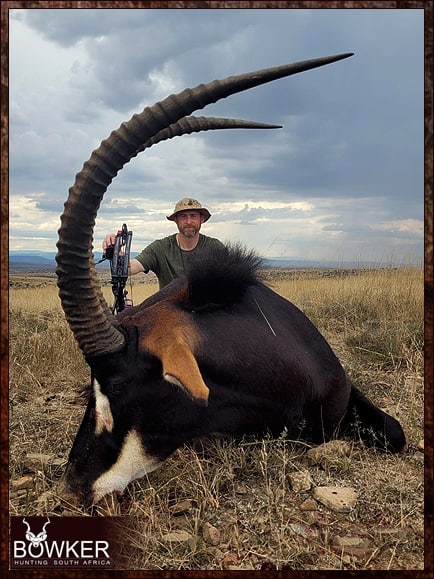
General Information for a Sable Game Hunt
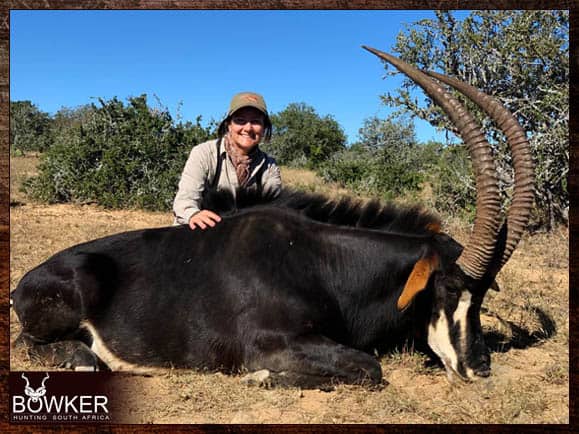
Calves under two months old are a light tan and show faint markings. The sable’s underparts, cheek, and chin are all white, contrasting with the dark back and flanks.
It has long, white hairs below the eyes and a wide, black stripe over the nose.
Both sexes have ringed horns that arch backward. In females, these can reach 24 – 34 inches, while they are 32 – 48 inches long in males.
The average lifespan is about 17 years in the wild and longer in captivity.
They live in savanna, woodlands, and grasslands during the dry season, eating mid-length grasses and leaves.
Hunting will involve a careful stalk through the savanna and woodlands.
They visit salt licks and chew bones to collect minerals and drink water in the mornings, an ideal hunting opportunity.
They are diurnal but are less active during the heat of the day.
We offer a dedicated sable hunt package.
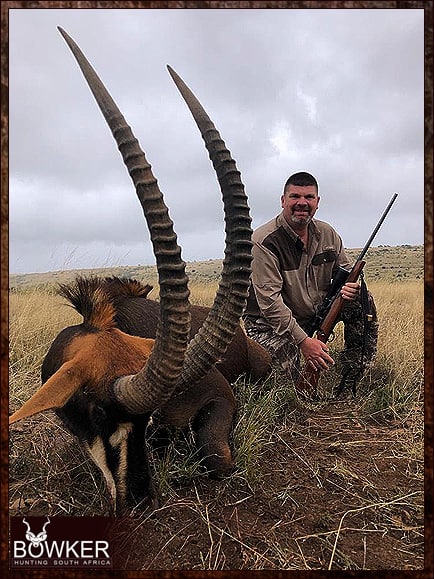
Sable Hunted with Nick Bowker
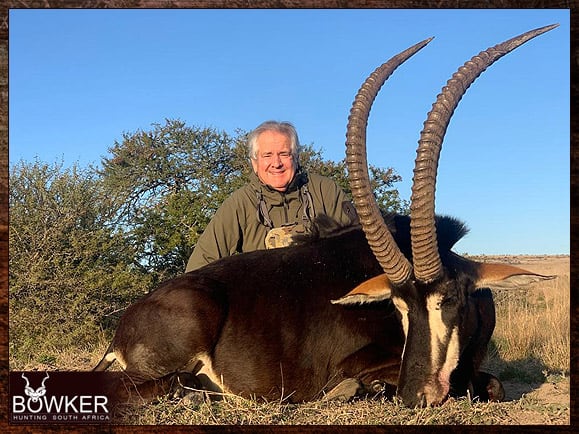
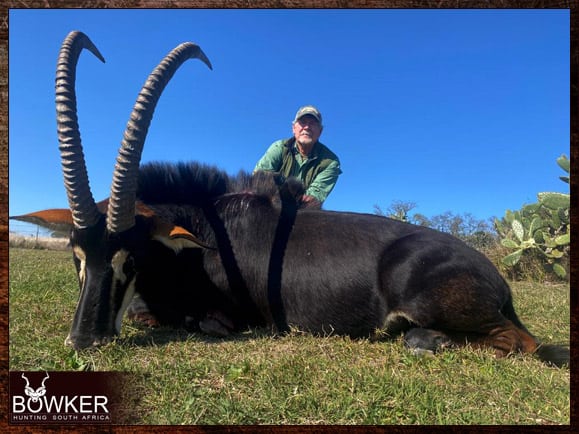
Frequently Asked Questions about Sable Hunting
How much does it cost to hunt Sable?
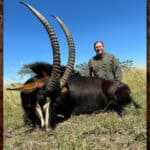
The trophy price as a standalone Sable hunt is between $ 3,000 – $ 5,000. Daily rates vary from $250 to $500 a day.
Included in the trophy fee is a licensed guide. As well as a hunting license and all permits.
How to hunt a Sable Antelope?
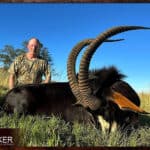
Sable hunting is in the early mornings and late evenings and spotted from an elevated vantage point in the thick brush and then stalked. Alternatively, hunters use ambush techniques at watering holes or as they move back to cover from feeding.
Where do you shoot a Sable Antelope?
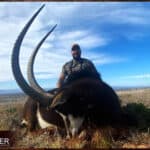
Shot placement for hunting must be in the bottom third of the animal, directly above the front shoulder. This will ensure a heart or lung shot. Avoid head and neck shots, which are high-risk when hunting sable.
What is a trophy Sable Antelope?
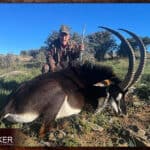
Sable Antelope trophies have a Horn Length of approximately 38 – 42 inches. The minimum qualification score under Safari Club International for a Sable is 96. Add the length of each horn and the circumference of the bases to get your SCI score.
How do you judge a Sable Antelope trophy?
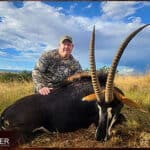
As with all African animals, a thick heavy, darkened neck is the first sign of maturity and often the most visible maturity characteristic when observing at a distance.
The skin color indicates trophy quality; always ensure the bull is of jet black color and not a tanned chocolate color, thus showing immaturity.
Look for the climb from the base, the hook backward, and lastly, the length of the tips while hunting.
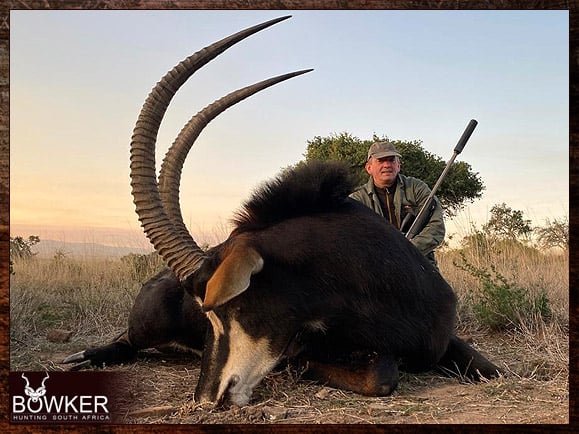
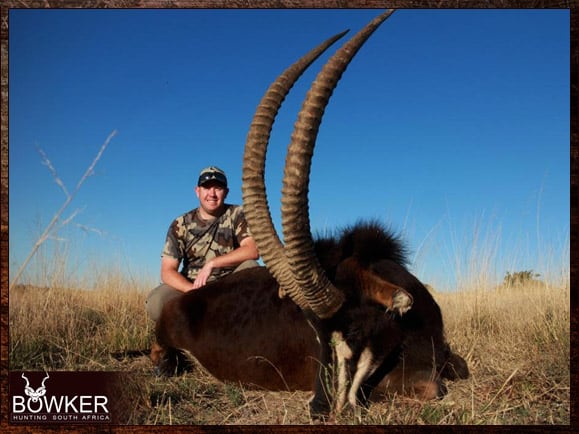
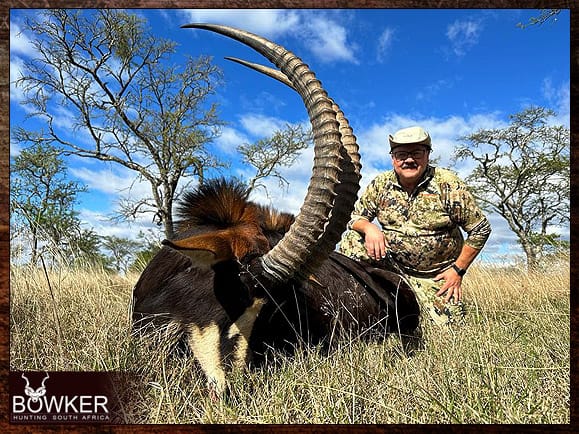
Seasonal Restrictions on Sable Hunting
When can you hunt Sable in South Africa?
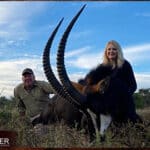
There are no seasonal restrictions on hunting Sable Antelopes in the Eastern Cape of South Africa for hunters
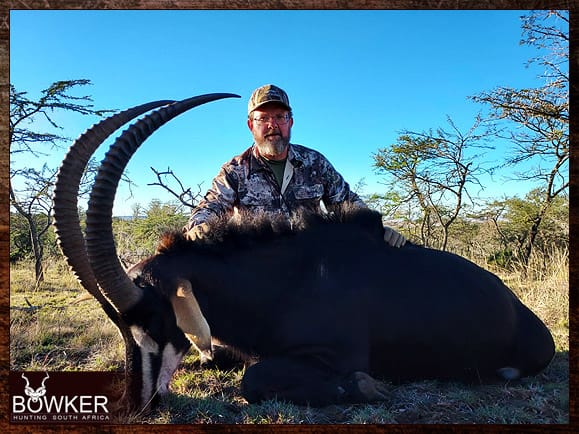
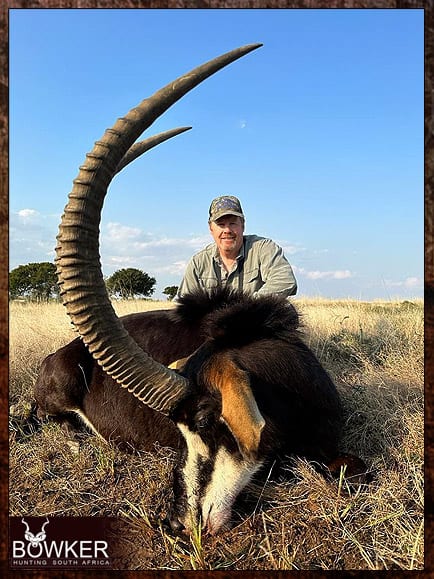
What Caliber is Recommended for Sable Antelope Hunts?
We recommend hunters use the flat shooting 300 Winchester or 7mm magnums with high-quality tactical scopes and a suppressor for Sable hunting.

In Pictures for Your Sable Hunt

